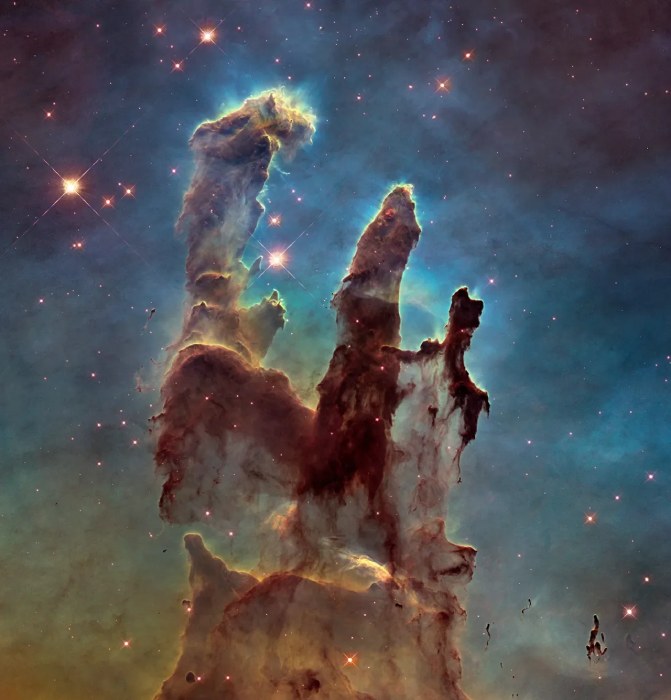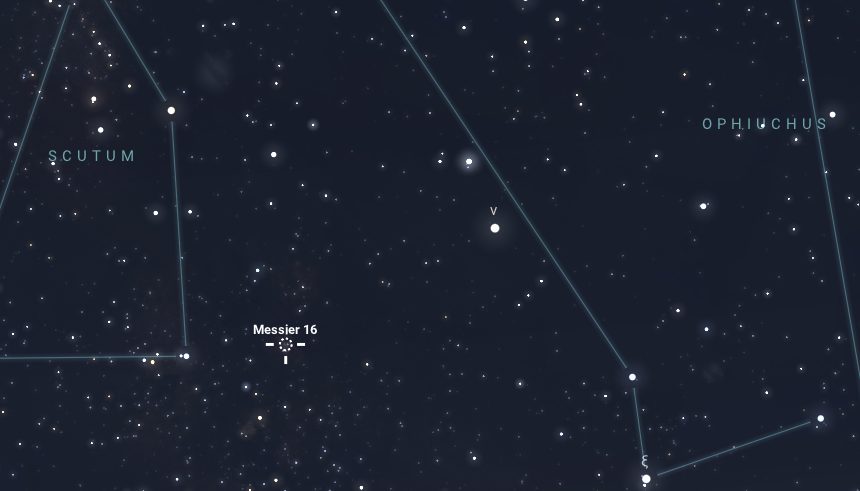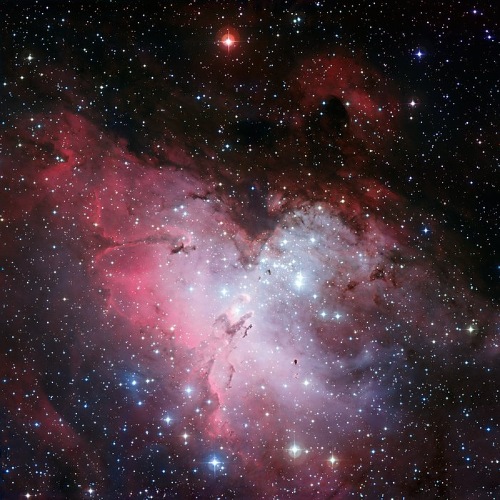The Eagle Nebula, or Messier 16 (M16), is a young star-forming region situated in the constellation Serpens, specifically in the Serpens Cauda area, often referred to as the tail of the serpent. Located approximately 7,000 light-years from Earth, it is renowned for its stunning “Pillars of Creation,” which are large columns of gas and dust acting as stellar nurseries.
The nebula was discovered by the Swiss astronomer Jean-Philippe Loys de Chéseaux in 1745–46. It was later catalogued as Messier 16 (M16) by Charles Messier in his famous catalogue of non-cometary objects. Below are some key details about this fascinating nebula:
Appearance and Composition
M16 is famous for its striking resemblance to a celestial eagle with outstretched wings, particularly in images taken by powerful telescopes. It consists of a vast cloud of gas and dust, illuminated by the light of nearby young, hot stars. Within the nebula are regions of intense star formation known as “stellar nurseries,” where new stars are being born.
Like many other nebulae, the Eagle Nebula primarily consists of hydrogen gas, along with other elements such as helium, oxygen, sulphur, and nitrogen. These elements are essential for the formation of stars and planetary systems within the nebula.
Pillars of Creation
Star formation in the Eagle Nebula occurs primarily within its stellar nurseries, particularly in the famous Pillars of Creation. These pillars are dense regions of gas and dust that collapse under their own gravity to form new stars. The process begins when the gas within these pillars is compressed by external forces, such as shock waves from nearby supernovae or the intense radiation from massive stars within the nebula.

As the gas and dust gather, they create denser clumps that eventually fragment into protostars. Over time, these protostars accumulate more material and heat up due to gravitational contraction. When the temperature and pressure in their cores become high enough, nuclear fusion ignites, marking the birth of a new star. This process can take millions of years, and the stars formed will vary in mass, impacting their life cycles and the surrounding environment
Additionally, the ultraviolet radiation from the young, massive stars in the Eagle Nebula plays a critical role in shaping the nebula’s structures. This radiation can erode the surrounding gas and dust, creating the striking shapes of the pillars while also triggering further star formation in adjacent
Observation
M16 is a favored object among both amateur and professional astronomers due to its striking appearance and scientific importance. With an apparent magnitude of 6.0, it is only just visible to the naked eye from exceptionally dark locations and is easily seen with binoculars. Small telescopes can also capture M16 from dark sites, but larger telescopes provide the best view, revealing intricate details and structures within the nebula.
The nebula can be observed from both Northern and Southern Hemispheres, but the viewing conditions vary by season.
In the Northern Hemisphere, M16 is best visible in the summer from late June to early September, particularly around midnight when it is at its highest point in the sky. In the Southern Hemisphere, the nebula is more challenging to observe. It becomes more visible from about late April to early August, though the best views are typically during the winter months of June and July.




